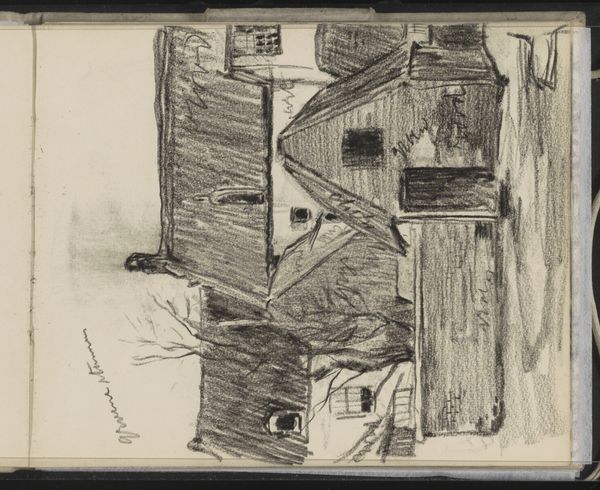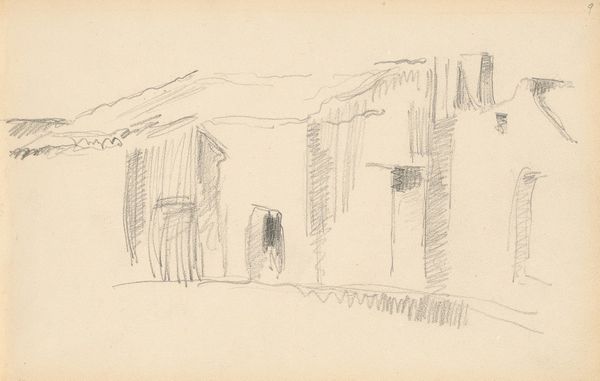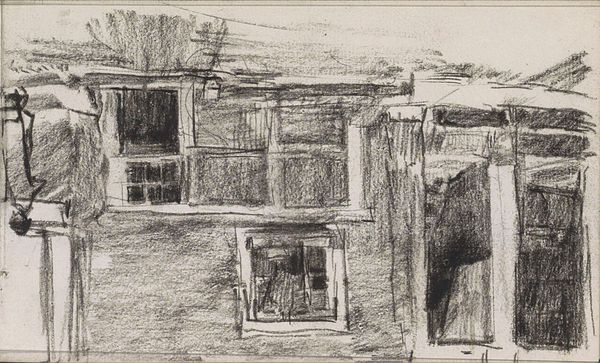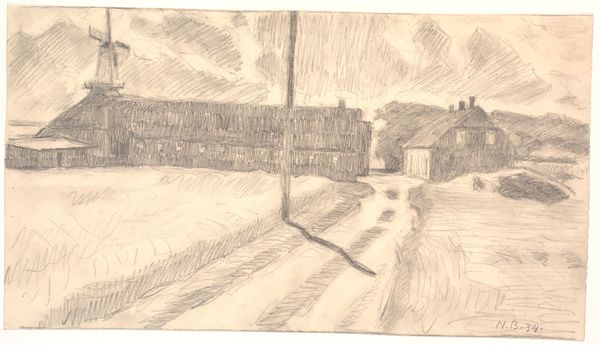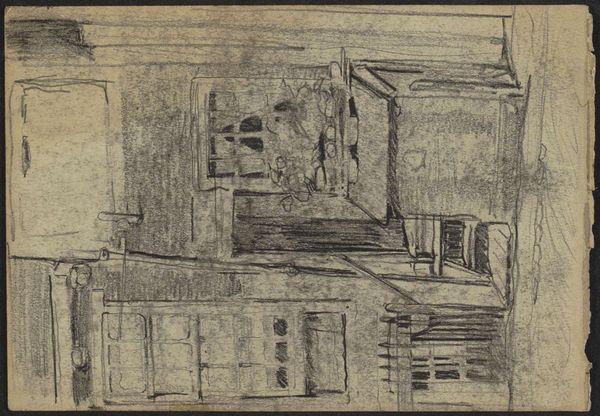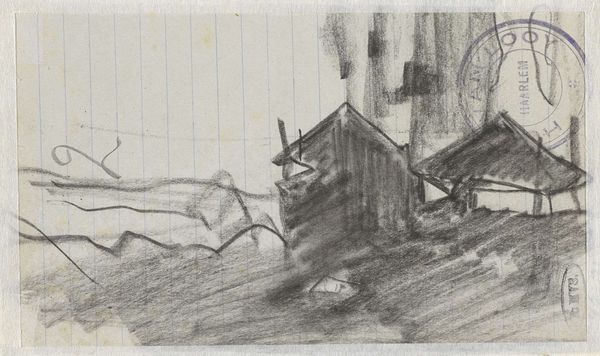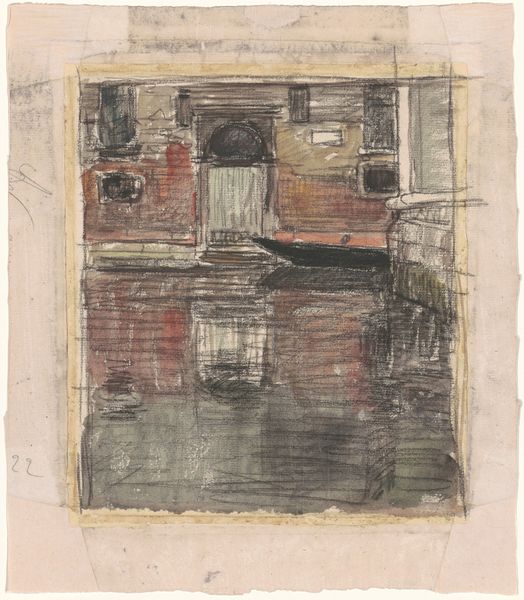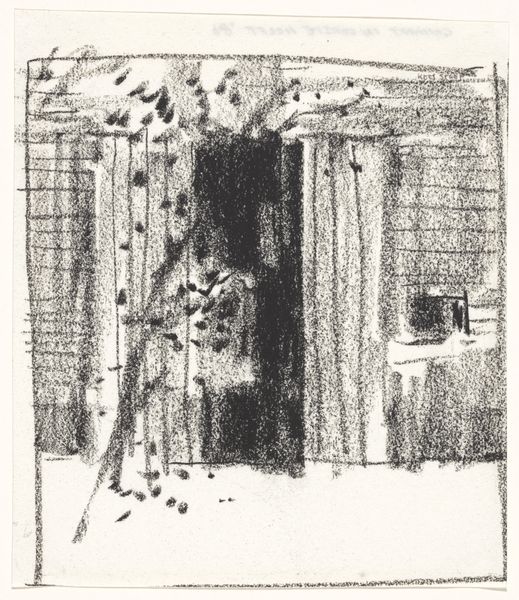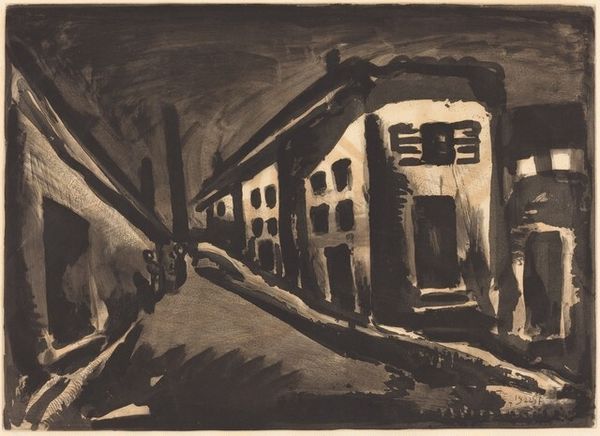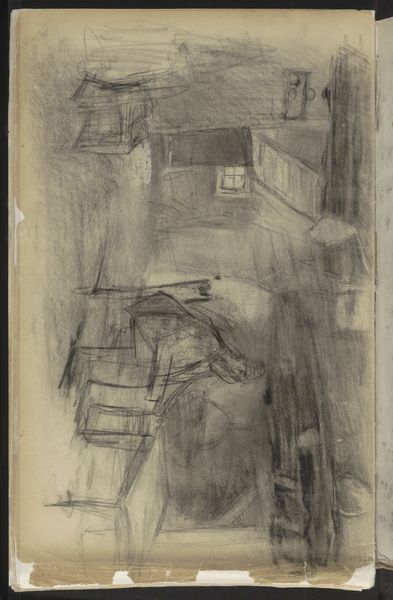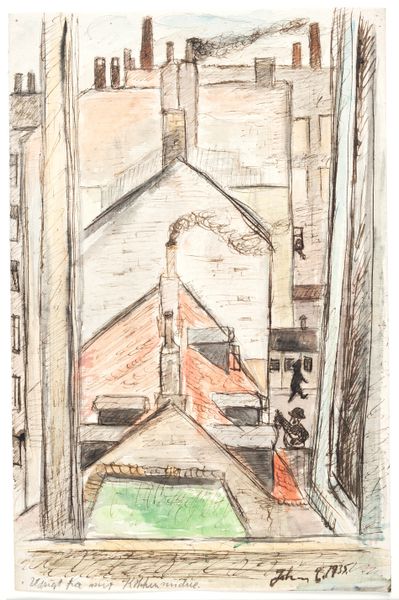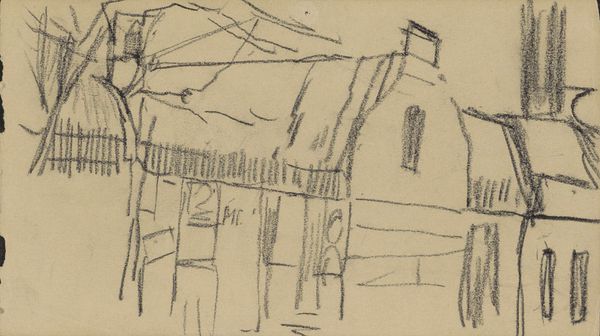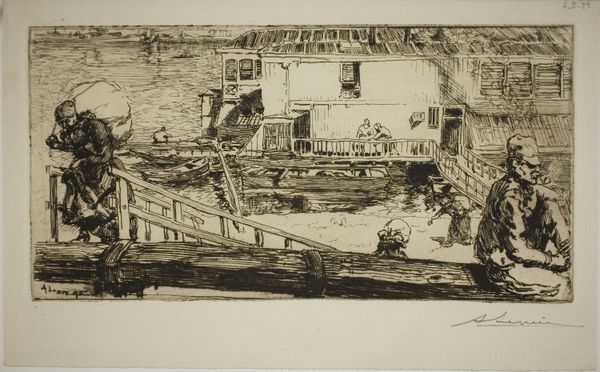
drawing, ink
#
abstract-expressionism
#
drawing
#
pen drawing
#
landscape
#
bay-area-figurative-movement
#
ink
#
cityscape
Dimensions: overall: 35 x 42.5 cm (13 3/4 x 16 3/4 in.)
Copyright: National Gallery of Art: CC0 1.0
Curator: "View from a Studio Window," dating back to 1967 and brought to us by Richard Diebenkorn. It's an ink drawing, simple yet… evocative, wouldn’t you agree? Editor: Stark, almost aggressively so. The high contrast creates an air of isolation, peering out from a fortress. Curator: I see that. But to me, the window itself acts as a framing device, both literally and symbolically. It reminds us of the artist's perspective, filtering reality. Windows have always represented possibility, imprisonment, transition—it’s a loaded image. What do you make of the visible architectural features, the surrounding buildings? Editor: The built environment dominates, right? We see how urban planning can be both beautiful and imposing. And if this is a studio window, it makes me wonder about the location, what city this reflects. It speaks volumes about his daily existence, his relationship to the outside world—specifically how the neighborhood outside the studio impacts an artist creatively. Curator: Absolutely. Think about the period; the social climate of the late 60s. Is the starkness of this view a reflection of those times, or a deliberate withdrawal? Editor: Or perhaps both! It raises the perennial question about the role of the artist in society, whether to engage directly or to observe from a remove, interpreting the outside world through their chosen medium. Diebenkorn’s mark-making looks fairly abstract here too. Does the architecture appear alienated? It’s also such a common sight, which is interesting. Curator: Notice how he focuses on geometric shapes, finding rhythm in the mundane. In doing so, there's an act of preservation too; he immortalizes the very everyday that surrounds him. I feel like the weight of those forms becomes charged with emotion. Editor: Yes, a tension. A tension between public and private, interior and exterior… Curator: Exactly. This is what I find endlessly compelling. How the symbolic resonance of the window—that division, and implied passage—captures the mood of the era, and arguably of our own too. We are perpetually observers and participants, simultaneously inside and outside of the frames we construct. Editor: So, in the end, perhaps we see ourselves in his studio window as much as we see 1967. A testament to the enduring power of such seemingly simple sketches.
Comments
No comments
Be the first to comment and join the conversation on the ultimate creative platform.
